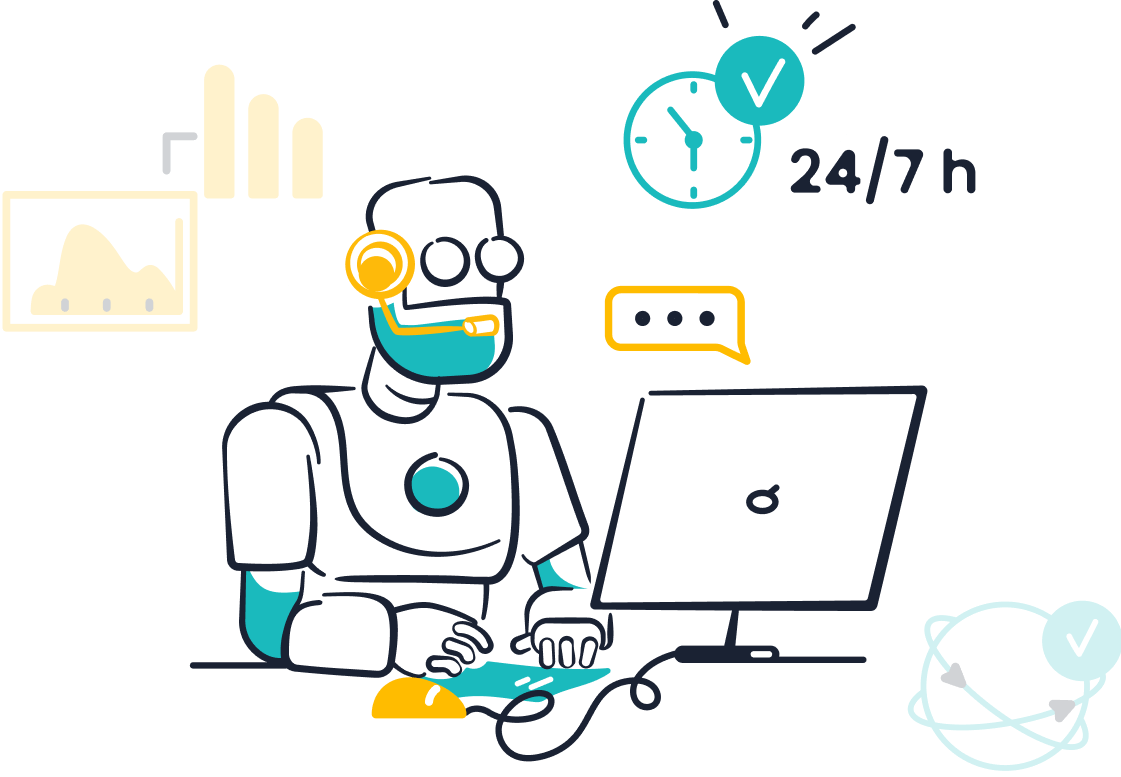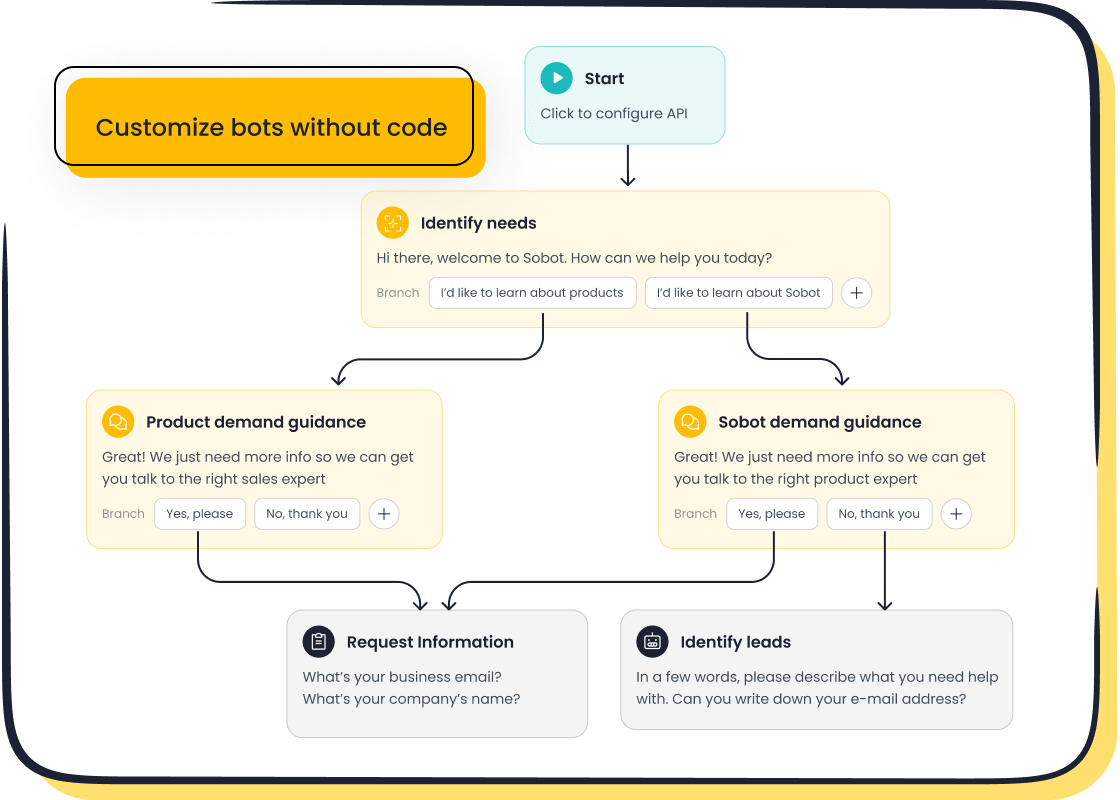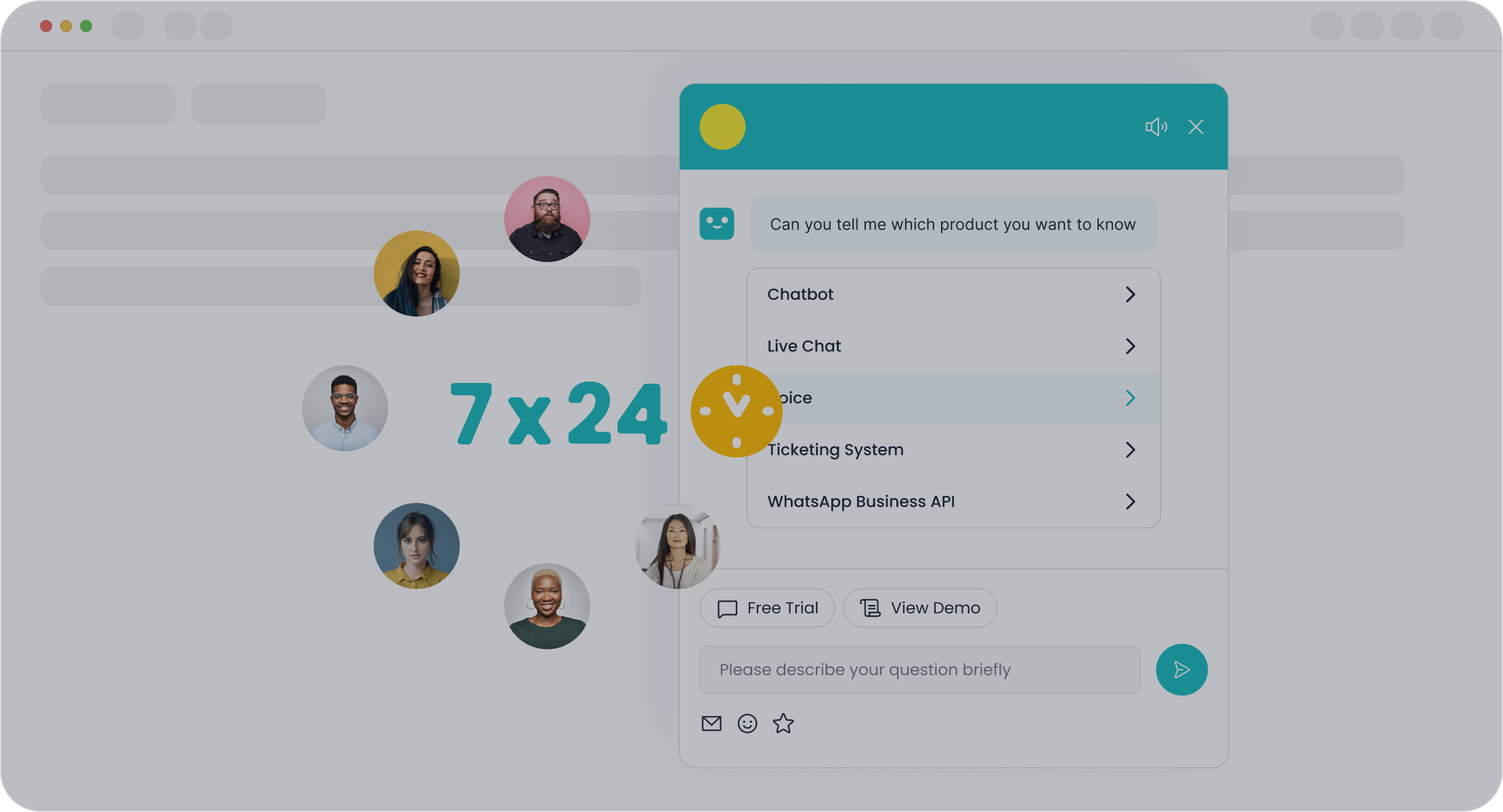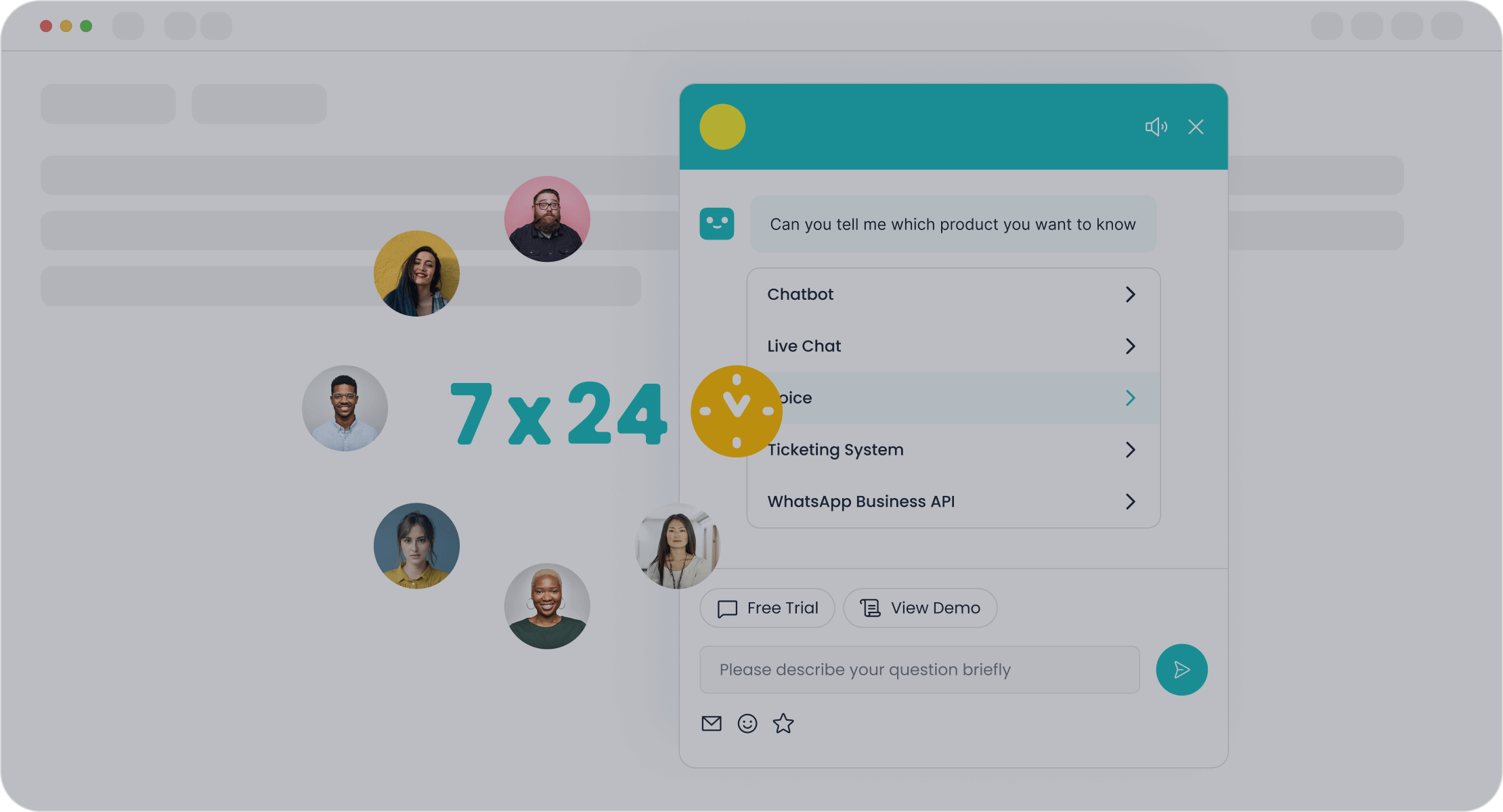Building AI Chatbots for Customer Support Simplified

AI chatbots have revolutionized customer support by providing instant, automated assistance to users. These intelligent systems streamline interactions, offering solutions to common queries without human intervention. Businesses using chatbots experience significant benefits. For example, companies report a 37% drop in first response times and a 35% reduction in customer service costs. Additionally, 68% of users appreciate the speed of chatbot responses, making them a preferred choice for quick support.
By automating repetitive tasks, chatbots free up human agents to handle complex issues, improving overall efficiency. Tools like Sobot’s chatbot enhance productivity by 70%, reduce costs by up to 50%, and boost conversions by 20%. If you’re wondering how to build an AI customer care system, this tutorial will guide you through the process step-by-step.
How to Build an AI Customer Care System

Define Objectives and Choose a Platform
Setting clear goals for your chatbot.
To build a customer support bot effectively, you must start by defining its objectives. Ask yourself: What problems should the chatbot solve? For example, do you want to reduce response times, automate repetitive queries, or improve customer satisfaction? Clear goals ensure the chatbot aligns with your business strategy. They also help you measure success after deployment. Businesses that set specific objectives, such as reducing first response times by 30%, often see better results.
Additionally, identify your target audience. Understanding customer needs allows you to design conversation flows that resonate with users. For instance, if your audience prefers quick answers, focus on creating concise and accurate responses.
Why Sobot's Chatbot is an ideal choice for customer support.

Choosing the right platform is crucial when learning how to build an AI customer care system. Sobot's chatbot stands out as an ideal choice. It offers omnichannel support, allowing you to deploy the bot across platforms like WhatsApp and SMS. This ensures seamless interactions where your customers are most active. Its no-coding-required interface simplifies the setup process, making it accessible even for non-technical users.
Sobot's chatbot also operates 24/7, handling routine queries autonomously. This reduces agent workload and improves efficiency by 70%. Its multilingual capabilities enable you to serve a global audience, enhancing customer satisfaction. With Sobot, you can create a bot that not only meets your objectives but also exceeds customer expectations.
Set Up Your Chatbot
Prerequisites for building a chatbot.
Before you set up your chatbot, gather the necessary resources. Start by defining the chatbot's goals and selecting development tools that align with your needs. For example, Sobot’s point-and-click interface eliminates the need for coding, making it easier to get started. You’ll also need a knowledge base, which serves as the foundation for the chatbot’s responses. This can include FAQs, product manuals, or customer service scripts.
Configuring the development environment and connecting a knowledge base.

Once you’ve prepared the prerequisites, configure the development environment. Platforms like Sobot simplify this step with user-friendly tools. Begin by uploading your knowledge base. Sobot allows you to import data from various formats, such as PDFs or Excel files. This ensures the chatbot has access to accurate and comprehensive information.
Next, test the chatbot’s functionality to ensure it understands and responds correctly. For example, if a customer asks about return policies, the chatbot should provide a clear and accurate answer. Proper setup ensures your chatbot delivers a seamless user experience.
Preparing Data for Training
Collecting FAQs and common customer queries.
Training data is the backbone of any AI chatbot. Start by collecting FAQs and common customer queries. These could include questions about shipping, pricing, or troubleshooting. Well-prepared data improves the chatbot’s ability to understand and respond accurately. For instance, businesses that use domain-specific data often see higher customer satisfaction rates.
Structuring data for optimal training results.
Organize your data to maximize training efficiency. Group similar queries together and label them with clear intents. For example, categorize questions about “order tracking” separately from “product returns.” This helps the chatbot recognize patterns and respond appropriately. Sobot’s AI tools streamline this process, ensuring your chatbot learns quickly and effectively.
Training and Testing Your Chatbot
Training the Chatbot
Uploading training data and annotating intents.
To train your chatbot effectively, start by uploading well-structured training data. This data should include FAQs, customer queries, and other relevant information. Organize the data into clear categories, such as "order tracking" or "product returns," to help the chatbot recognize user intents. For example, if a customer asks, "Where is my order?" the chatbot should identify the intent as "order tracking" and provide an accurate response.
Annotation plays a critical role in this process. Label each query with its corresponding intent to guide the AI in understanding user inputs. Sobot’s AI-powered tools simplify this step by automating much of the annotation process, saving you time and effort. Properly annotated data ensures your chatbot delivers precise and relevant answers.
Using Sobot's AI-powered tools for efficient training.
Sobot’s AI tools make it easier to train your chatbot. These tools use advanced algorithms to analyze your data and improve the chatbot’s learning process. For instance, Sobot allows you to upload data in various formats, such as PDFs or Excel files, ensuring flexibility. The platform also provides real-time feedback during training, helping you fine-tune your chatbot for better performance.
Tip: Industry benchmarks suggest that response times under 1 second significantly enhance user experience. Sobot’s tools help you achieve this by optimizing your chatbot’s response speed during training.
Testing the Chatbot
Tools for testing chatbot functionality.
Testing ensures your chatbot works as intended. Use tools to check for technical issues, such as broken links or incorrect responses. Functional testing verifies that all features operate correctly, while usability testing evaluates the chatbot from the customer’s perspective. Sobot’s platform offers built-in testing tools to streamline this process.
| Aspect of Testing | Importance |
|---|---|
| Functional Testing | Checks for technical issues like broken links and incorrect information. |
| User Testing | Evaluates the chatbot from the customer's perspective, ensuring clarity and ease of use. |
| User Feedback | Reveals confusing elements in conversation flow, highlighting areas for improvement. |
| Performance Optimization | Ensures the chatbot performs well under real user conditions, enhancing customer satisfaction. |
Simulating real-world customer interactions.
Simulating real-world scenarios is a crucial part of testing. Create test cases that mimic actual customer queries to evaluate how well your chatbot responds. For example, test how the chatbot handles complex questions or unexpected inputs. This process helps identify gaps in functionality and ensures your chatbot is ready for deployment.
Thorough testing before deployment ensures functionality, usability, performance, and security. It also reduces errors and enhances customer satisfaction.
Iterative Refinement
Improving responses based on test results.
Testing is not a one-time process. Use the results to refine your chatbot’s responses. Analyze metrics like response time, error rate, and user satisfaction to identify areas for improvement. For instance, if users report confusion about a specific response, update the chatbot’s knowledge base to provide clearer answers.
- User testing provides insights into the chatbot's effectiveness in real-world scenarios.
- Analyzing user feedback helps identify weaknesses and areas for refinement.
- Continuous iteration enhances functionality and ensures consistent performance.
Adding new intents and entities for better accuracy.
As your chatbot interacts with users, it will encounter new types of queries. Add new intents and entities to expand its capabilities. For example, if customers frequently ask about a new product, create an intent for that topic. Sobot’s platform makes it easy to update your chatbot, ensuring it stays relevant and accurate.
Regular updates are necessary to keep up with changing customer expectations and industry standards. This process ensures your chatbot remains a valuable tool for customer support.
Customizing and Deploying Your Chatbot
Personalizing the Chatbot
Customizing greetings and responses to match your brand.
Personalization is key to creating a chatbot that resonates with your audience. Start by tailoring greetings and responses to reflect your brand's tone and values. For example, a playful brand might use casual language, while a professional one would opt for formal communication. Adding empathy and warmth to responses can also enhance user satisfaction. Studies show that personalized chatbot communication improves engagement and fosters loyalty. Chatbots with emotionally intelligent responses often satisfy users' emotional needs, making interactions more meaningful.
User satisfaction scores (CSAT) above 4.2 indicate that personalization delivers significant business value. By aligning your chatbot's responses with your brand identity, you can create a consistent and memorable customer experience.
Designing the chatbot widget for your website or app.
The chatbot widget serves as the face of your AI system. Design it to blend seamlessly with your website or app. Use your brand colors, fonts, and logo to maintain consistency. A well-designed widget not only attracts users but also encourages interaction. For instance, placing the widget in a visible location, such as the bottom-right corner of your website, ensures accessibility. Sobot’s chatbot allows you to customize the widget effortlessly, ensuring it aligns with your brand's aesthetics.
Deploying the Chatbot
Publishing the chatbot on your preferred channels.

To maximize reach, publish your chatbot on platforms where your customers are most active. Popular channels include WhatsApp, SMS, and websites. Sobot’s omnichannel support ensures seamless integration across these platforms. Metrics like response time and uptime are critical during deployment. A response time under 1 second for text-based systems enhances user experience. Reliable performance builds trust and ensures your chatbot meets customer expectations.
| Metric | Importance |
|---|---|
| Response Time | Should be under 1 second for text to maintain perceived fluency. |
| Uptime | Critical for customer-facing systems; even brief downtimes can impact brand perception. |
| Error Rate | Monitors technical issues during conversations, essential for reliability. |
Integrating with Sobot's omnichannel support for seamless interaction.
Sobot’s omnichannel capabilities allow your chatbot to interact with customers across multiple platforms. This ensures a consistent experience, whether users contact you via WhatsApp, SMS, or your website. Cross-channel consistency improves user satisfaction and simplifies customer support. By integrating with Sobot, you can provide a unified experience that meets customer needs efficiently.
Launching and Monitoring
Announcing the chatbot to customers.
Once you publish your chatbot, inform your customers about its availability. Use email campaigns, social media posts, or website banners to make the announcement. Highlight the chatbot's features, such as 24/7 availability and instant responses, to encourage usage. For example, H&M successfully increased customer engagement by promoting its chatbot for product recommendations and order tracking.
Monitoring initial performance and gathering feedback.
After launch, monitor your chatbot's performance closely. Use metrics like CSAT, NPS, and UES to evaluate its effectiveness. Chatbots with CSAT scores above 4.2 typically deliver significant business value, while scores below 3.8 indicate areas for improvement. Gathering customer feedback helps identify specific issues and enhancements. Continuous feedback ensures your chatbot evolves to meet customer expectations.
Tip: Regularly update your chatbot based on feedback to maintain high performance and user satisfaction.
Advanced Features for Enhanced Customer Support

Leveraging Advanced AI Capabilities
Implementing conditional workflows for complex queries.
Conditional workflows allow your chatbot to handle intricate customer interactions effectively. These workflows guide the chatbot through dynamic paths based on user inputs, ensuring accurate responses. For example, if a customer asks about a refund, the chatbot can direct them to the appropriate policy or escalate the query to a human agent if needed.
Metrics like intent recognition accuracy and sentiment analysis play a vital role in designing these workflows. High intent recognition rates ensure the chatbot understands user needs, while sentiment analysis tailors responses based on emotional tone. Research from Stanford University shows that leading AI systems achieve intent recognition rates exceeding 90%, making them ideal for conditional workflows.
| Metric Type | Description |
|---|---|
| Intent Recognition Accuracy | Measures how often the chatbot correctly identifies user needs, crucial for effective conditional workflows. |
| Sentiment Analysis | Monitors the emotional tone of interactions, helping to tailor responses based on user mood. |
| Path Analysis | Tracks common conversation flows, aiding in the design of conditional paths in chatbot interactions. |
Using zero-shot agents to handle unknown queries.
Zero-shot agents empower your chatbot to address unfamiliar questions without prior training. These agents use advanced AI techniques, such as knowledge graphs and large language models (LLMs), to infer answers. For instance, if a customer asks about a new product feature, the chatbot can generate a response based on existing data.
Combining zero-shot prompting with ontology-based query checks enhances accuracy significantly. Studies show that accuracy improves from 16.7% to 72.55% when using these methods. Additionally, error rates drop from 83.3% to 19.44%, ensuring reliable performance. This capability makes zero-shot agents invaluable for expanding your chatbot’s support scope.
Optimizing Chatbot Performance
Monitoring analytics and customer feedback.
Analytics and feedback provide insights into your chatbot’s performance. Metrics like customer satisfaction scores (CSAT) and fallback rates highlight areas for improvement. Regularly reviewing these metrics ensures your chatbot remains effective.
Organizations that integrate analytics with CRM systems gain 25-30% more value from digital initiatives. For example, tracking conversation metrics in Sobot’s platform helps you understand how the chatbot impacts your sales pipeline. Use this data to refine responses and enhance user engagement.
Regular updates and integration with CRM tools.
Updating your chatbot regularly keeps its content relevant. Add new intents and refine existing ones based on customer interactions. Integrating with CRM tools ensures seamless data flow, enabling personalized responses. Research shows that personalization boosts user satisfaction and engagement. Sobot’s chatbot simplifies CRM integration, helping you optimize workflows and improve customer support.
Ensuring Scalability
Preparing for increased traffic and customer demands.
Scalability ensures your chatbot performs well during peak periods. Prepare by optimizing workflows and expanding server capacity. AI-powered chatbots like Sobot’s handle high volumes efficiently, reducing wait times.
- Implement multilingual live chat software to assist customers in their preferred language.
- Train customer support representatives to communicate effectively in multiple languages.
- Utilize AI-powered chatbots to manage common inquiries in various languages.

Expanding multilingual support with Sobot's Chatbot.
Multilingual support broadens your chatbot’s reach. Sobot’s chatbot interacts in multiple languages, ensuring global accessibility. Metrics like customer satisfaction scores and first response times measure the effectiveness of this feature. Surveys and reviews provide additional insights into user preferences, helping you refine language capabilities.
Tips to Build a Customer Support Bot That Excels
Enhancing Customer Experience
Personalizing interactions with proactive messaging.
Proactive messaging allows your chatbot to engage customers before they even ask for help. By anticipating their needs, you can provide solutions or recommendations that enhance their experience. For instance, if a customer lingers on a product page, your chatbot can offer a discount or answer common questions about the item. This approach not only improves engagement but also builds trust.
Many companies have seen measurable success with proactive messaging. For example:
- 84% of executives use AI to improve customer communication.
- 67% prioritize faster information delivery, while 62% aim to reduce wait times.
- 34% report revenue increases due to enhanced customer experiences.
By integrating AI-driven proactive messaging, you can create a seamless and satisfying customer journey.
Adding voice capabilities for accessibility.
Adding voice capabilities to your chatbot makes it more accessible to a wider audience. Voice-enabled bots allow users to interact hands-free, which is especially helpful for those with disabilities or those multitasking. For example, a customer could ask, “What’s my order status?” and receive an instant verbal response.
Voice capabilities also improve engagement. Companies like Delta have seen a 12% increase in customer satisfaction and a 10% reduction in complaints after implementing voice-based AI solutions. By enabling voice interactions, your chatbot becomes a more inclusive and user-friendly tool.
Reducing Costs and Improving Efficiency
Automating repetitive queries with Sobot's Chatbot.

Automating repetitive queries is one of the most effective ways to reduce costs. Sobot's chatbot can handle common questions like “What are your business hours?” or “How do I reset my password?” without human intervention. This reduces the workload on your support team and allows them to focus on complex issues.
Businesses using AI chatbots report significant savings:
- 37% of companies use chatbots to respond three times faster than human agents.
- 90% of businesses resolve complaints faster, with 80% noting increased call volume capacity.
- GogglesNMore automated 70% of customer support requests, improving operational efficiency and maintaining 24/7 availability.
Sobot’s chatbot ensures your team operates efficiently while keeping costs low.
Streamlining workflows with AI-driven solutions.
AI-driven solutions streamline workflows by integrating your chatbot with other tools like CRM systems. This allows for seamless data sharing and faster resolution times. For example, when a customer asks about their order, the chatbot can pull data from your CRM to provide an instant update.
Streamlined workflows lead to better performance. Companies using AI chatbots report a 24% increase in customer satisfaction scores and faster complaint resolution. Sobot’s chatbot simplifies these processes, ensuring your operations run smoothly.
Boosting Conversions and Engagement
Using smart self-service to increase lead generation.
Smart self-service features empower customers to find answers on their own, which improves satisfaction and generates leads. For example, Sobot’s chatbot can guide users through product recommendations or troubleshooting steps. This reduces the need for human assistance while keeping customers engaged.
Metrics show the impact of self-service:
- Conversion rates increase when users complete desired actions through the chatbot.
- Self-service sessions often result in higher goal completion rates and lower basket abandonment rates.
By offering smart self-service, you can turn casual visitors into loyal customers.
Integrating with marketing tools for better engagement.
Integrating your chatbot with marketing tools enhances engagement by delivering personalized campaigns. For instance, your chatbot can send targeted messages based on user behavior, such as abandoned carts or browsing history.
Companies like Nike have seen a 30% increase in online sales and improved customer loyalty through AI-driven engagement. Sobot’s chatbot supports such integrations, helping you connect with customers more effectively and drive conversions.
Building an AI chatbot for customer support involves clear objectives, proper training, and continuous refinement. By following these steps, you can create a chatbot that enhances efficiency and customer satisfaction. Sobot's chatbot simplifies this process with its no-coding interface, multilingual support, and omnichannel capabilities. Businesses using Sobot report improved metrics like a 70% productivity boost and a 50% cost reduction.
| Metric | Description |
|---|---|
| Conversion rate | Percentage of users completing desired actions after chatbot interaction. |
| Satisfaction rate | Average user rating for chatbot responses. |
| Self-service rate | Sessions resolved without further contact. |
Start building your chatbot today with Sobot’s AI-powered solutions to transform your customer support experience.
FAQ
What is the primary purpose of a chatbot in customer support?
A chatbot automates responses to common customer queries, providing instant assistance. It reduces wait times and improves efficiency. For example, Sobot’s chatbot operates 24/7, handling repetitive questions like order tracking or password resets, allowing human agents to focus on complex issues.
How does AI improve chatbot performance?
AI enhances a chatbot's ability to understand and respond accurately. It uses machine learning to analyze customer inputs and improve over time. For instance, Sobot’s AI-powered chatbot learns from interactions, ensuring better responses and higher customer satisfaction.
Can a chatbot handle multiple languages?
Yes, many chatbots, including Sobot’s, support multilingual interactions. This feature allows businesses to serve a global audience. For example, Sobot’s chatbot can communicate in over 10 languages, ensuring customers receive support in their preferred language.
Is coding required to set up a chatbot?
No, platforms like Sobot offer no-code solutions. You can use a point-and-click interface to design workflows and responses. This makes chatbot setup accessible even for non-technical users, saving time and resources.
How do I measure the success of my chatbot?
Track metrics like resolution rate, customer satisfaction (CSAT), and response time. For example, Sobot’s chatbot achieves an 83% resolution rate, which indicates its effectiveness in handling customer queries.
See Also
Enhancing Customer Satisfaction Through Effective Chatbot Solutions
Simple Steps to Integrate Chatbots on Your Website
Selecting The Right Chatbot Software For Your Needs